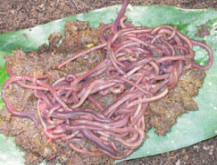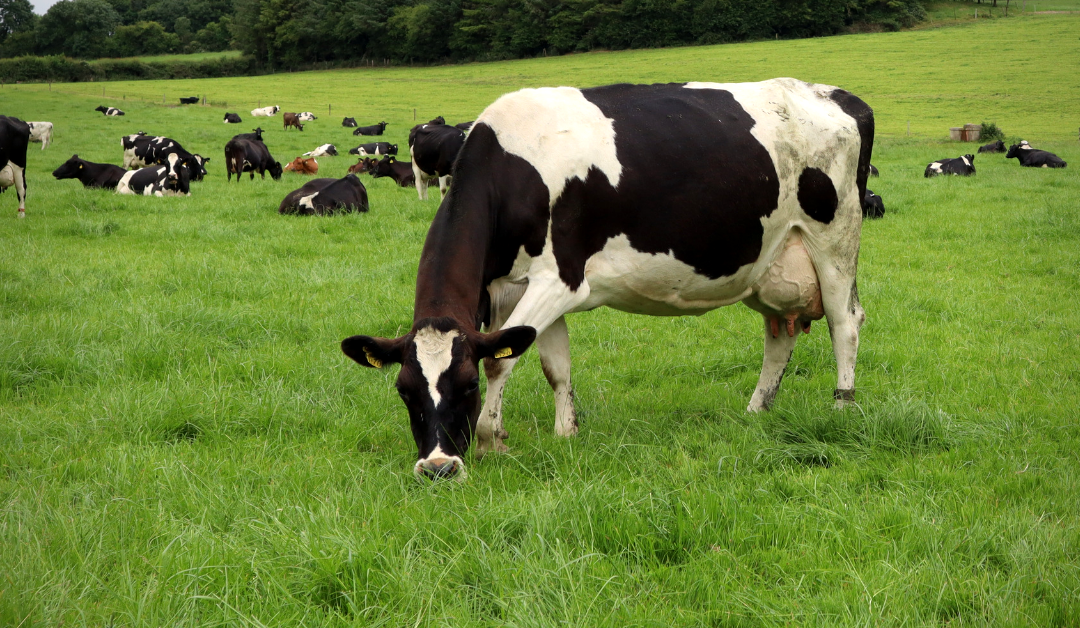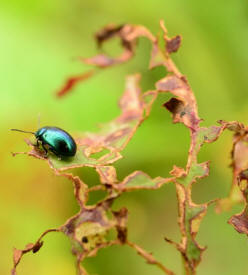Your cart is currently empty!
Category: Scientific Validation
-
Scientific Aspects of Agnihotra: Human Health
Previously we have covered the effects of Agnihotra and Homa Therapy on our environment (atmosphere, soil, water resources), on plants and agriculture, on biodiversity and on animals.
Now let us look into the implications of Agnihotra and Homa Therapy for Human Health.
 (more…)
(more…) -
Scientific Aspects of Agnihotra: Animals – Fish
Agnihotra and Homa Therapy have a profound effect on all Nature, bringing it back to Harmony. This also means there will be beneficial effects in the animal kingdom. So far we have concentrated on the three best farmer’s friends: Cows, bees, and earthworms as these play a crucial role in agriculture (and that also means for feeding all of us). Now let us have a look at several studies which were made on the effects of Agnihotra and Agnihotra Ash on fish.Fish in aquaria

The first such study was done long time back in Poland, still in the communist time. It seems normal that when fish are put in a new aquarium – a new environment – a substantial percentage dies because of that change. This is a problem especially for shops dealing with ornamental fish – each time a new delivery comes there is some loss. (more…) -
Scientific Aspects of Agnihotra: Animals – Earthworms
We previously have discussed two of the three best farmer’s friends: Cows and bees.
The third of these animals are earthworms. Earthworms play a decisive role in improving and maintaining good soil health – and as we have seen before soil health is of utmost importance for survival of mankind (see Homa Health Newsletter 133 from May 13, 2017).
And as already now 25% of fertile soil has been degraded in the last 50 years, regeneration of soil is a big challenge for farming. Earthworms can help with that a lot.
They play a key role in improving soil structure and soil fertility and thus lead to a healthy soil. They consume organic matter on the soil surface or in the soil. This matter is digested in the earthworms’ bodies and turned into a very good organic fertilizer. (more…)
-
Scientific Aspects of Agnihotra: Animals – Bees
In Agriculture, there are three helpers from the animal kingdom.
First helper is the cow. Without cows Organic Farming is difficult and Homa Organic Farming is not possible.
Then we have the bees and the earthworms.
About cows we already have talked, so let us now concentrate on the role of bees in agriculture and all Nature.
Of course honey bees are important for producing honey which is a very nutritious substance which also has a lot of healing applications. Even more important though is the role of bees in pollination. (more…)
(more…) -
Scientific Aspects of Agnihotra: Animals – Cows
In this series of articles we have covered so far the effects of Agnihotra on our environment (atmosphere, soil, and water resources) and also the use of Agnihotra in agriculture / horticulture.
Now let us look into the effect Agnihotra has on animals and how it can be used for animal husbandry. The first animal which comes to mind are cows.
Cows supply us with cow dung and milk from which we prepare cow’s ghee. Without cows there would be no Agnihotra, no Vedic Yajnyas. Can cows also benefit from Agnihotra? (more…)
(more…) -
Scientific Aspects of Agnihotra: Agriculture – Biodiversity (Part II)
How does Homa Organic Farming help to calm down this “storm on the horizon”, to bring Nature back to Harmony, to restore biodiversity?
Reports from farmers and scientific studies give some answers.
Let us start with an observation Rita and Thomas Hirt made on their Homa Farm in Rippistal, Switzerland. When they started the farm one big problem was that the meadows were widely covered with a tall growing weed, the broadleaf dock (Rumex obtusifolius). A few of these plants are o.k., they can even be used as medicine. But as these meadows are used for cows who graze there in summer and hay is made for winter, it was a problem that large areas were covered by broadleaf dock, making these areas useless.
All neighbouring farmers had the same problem – but they used herbicides to control the broadleaf dock. Not possible on a Homa Farm – and as we have seen this may solve one problem, but create more other problems as it brings Nature more away from Harmony.
Interesting what happened after some time of performing the Homa fires and spraying Agnihotra Ash water: Green dock beetles (gastroidea viridula) arrived in large number and controlled the broadleaf dock.
These beetles were not found on the meadows of neighbouring farms. This is an example how on a Homa Farm biodiversity is restored and automatically beneficial insects arrived. This also reminds on the experience which Abhay Mutalik Desai had on his farm where woolly aphid was controlled by two natural predators – Micromus igorotus and Dipha aphidivora (see Homa Health Newsletter # 136).

Greendock beetles arrive in large numbers.
Finishing broadleaf dock. (more…)
-
Scientific Aspects of Agnihotra: Agriculture – Biodiversity (Part I)
Since more than a decade now a dramatic decline of bee population has been noticed worldwide. Now we learn that a similar decline can be found regarding all insects.
Recently an alarming study was published by scientists from Germany, Great Britain, and the Netherlands. Insects were captured in nature reserves throughout Germany and counted. This long-term study found that within 25 years there was a reduction of 75%!
Flying insects caught in a malaise trap, used by entomologists to collect samples. (more…) -
Scientific Aspects of Agnihotra: Agriculture – Food Quality (Part II)
Now let us see whether Homa Farming has a positive effect on the nutritional value also. Again we find a lot of information in the four M.Sc. theses done at Dharwad Agricultural University (Karnataka, South India). Homa Farming methods were compared with organic methods (without Homa) and with conventional farming methods. The crops planted were soy beans, cabbage, tomatoes, and okra. (Okra is also known as ladies’ fingers, a vegetable quite popular in Asian and African countries.)
 (more…)
(more…) -
Scientific Aspects of Agnihotra: Agriculture – Food Quality

For good health, proper diet with nutritious vegetables, fruits, and grains is of great importance. But it seems that with the food produced nowadays our bodies often do not get all the micronutrients they need to maintain good health. Several recent studies show that there is a decline in nutritional value of vegetables, fruits, and grains. (more…)
-
Scientific Aspects of Agnihotra: Agriculture – Pests and Diseases

Vedic Knowledge says that when we perform Agnihotra, a channel is created above the pyramid, going up 12 kilometres.
Prana energy – Life Energy – which lies above our atmosphere comes down through this channel. Because of pollution this flow of Prana energy might be blocked otherwise. (more…)